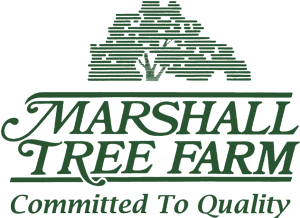Pruning specifications for medium aged and mature trees
Edward F. Gilman University of Florida
SAMPLE PRUNING SPECIFICATIONS FOR MEDIUM-AGED AND MATURE TREES ON A CONDOMINIUM COMPLEX
Following some minor wording changes, you can use this on residential and other small jobs without written specifications to ensure that the customer has an idea of what work will be performed on the trees.) The word ‘shall’ indicates a practice that is mandatory. The word ‘should’ refers to a practice that is highly recommended.
Objectives
Reduce potential hazardous conditions in trees and improve tree structure by:
- Removing dead branches.
- Reducing the weight of branches or stems with included bark.
- Reducing the weight toward the ends of all but one codominant stem.
- Thinning the canopy.
General Procedures
No young trees less than 12 inches trunk diameter shall be pruned.
Live branches less than 1.5 inches diameter should not be removed.
Dead branches greater than 1.5 inches in diameter (measured at the base of the branch ) shall be removed from the canopy of all trees.
No live branches greater than 8 inches diameter shall be removed from the tree without authorization from our office.
Remove no more than 20 percent of live foliage from the tree unless indicated below.
Specific Procedures
- Weight on main scaffold limbs with included bark shall be reduced by approximately one-third by removing some secondary branches toward the ends of the limbs and/or by removing the end of the branch using a drop-crotch cut.
- If a medium-aged tree (less than 30 inches trunk diameter) divides into two or more codominant leaders of about equal size in the bottom two-thirds of the tree, reduce the end weight by approximately one-third (you can adjust this percentage depending on the size hole in the canopy that the customer is willing to tolerate) using drop-crotch and thinning cuts on all stems but the one that you believe could become the strongest and most dominant leader. To accomplish this, remove branches growing toward the center and leave those that are oriented outward. Use mostly thinning cuts, not drop-crotch cuts, on larger trees. (Note: On some trees, you may not be able to perform all of this because you can not remove more than 20 percent of the foliage. Make a not of this on the site map).
- Identify those trees that have included bark in the crotches between codominant stems. Make a note of these on the site map. These trees will be evaluated by another arborist for possible cabling. Cabling will be performed under separate contract. Identify limbs and trunks with vertical cracks. Make a note of these conditions on the site map.
- If less than 20 percent of the foliage was removed on a mature tree following procedures 1 and 2 above, thin the canopy to allow more light to reach the ground under the tree and to reduce damage from wind storms. The foliage removed shall be taken primarily from the outer edge of the canopy, not from the interior. Interior branches shall be left on the tree. Do not remove water sprouts from the interior of the tree.
- Crowns of trees that were cold-damaged or topped will be restored to improve structure and form. Remove or shorten all sprouts except one, which will become the dominant stem at that point. You may remove up to 30 percent of the foliage when performing this work.
Pruning techniques
Pruning cuts shall be in accordance with ANSI A300 pruning standards.
Tools and equipment
Climbing spurs shall not be used when climbing trees, except to climb a tree to be removed or to perform an aerial rescue of an injured worker.
Equipment and work practices that damage bark or cambium should be avoided.
Rope injury from loading out heavy limbs should be avoided.
General
Preference will be given to firms who have at least one certified arborist on their staff. Certification is through the International Society of Arboriculture, Savoy, IL. A certified arborist shall be on site at all times during work activities. Violation of these procedures and techniques could result in termination of you contract without payment. All debris shall be removed from the site at the completion of the job. Safety All work shall be performed by workers trained in accordance with ANSI Z133.1 safety regulations as required by OSHA. Areas of inclusion Provide a brief description of the trees to be pruned so there can be no confusion. A map is often very helpful. Exclusions Provide a brief description of the trees and large shrub that are not included in the bid such as Ligustrum, waxmyrtles, etc. Additional Requirements All debris and equipment shall be removed from the site by the end of each workday. The selected contractor shall be required to furnish a certificate of insurance to include liability, automotive, and worker’s compensation before commencing work.
With these detailed specifications, all firms will be bidding on the same work, and with time, bids will be more competitive and closer to each other in price. These specifications will also scare aware the underqualified firms that should not be working on these trees anyway.
